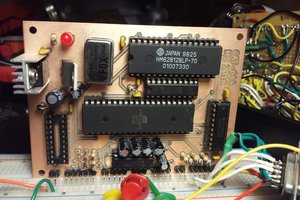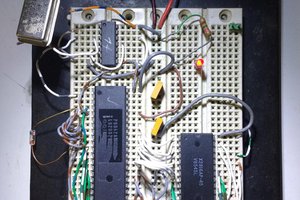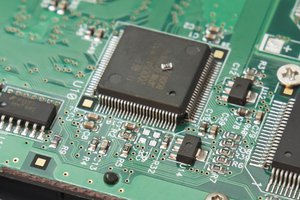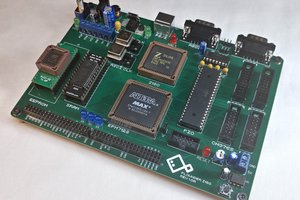Background
So far, the Microtronic firmware was lost to history - even the original developers (including Jörg Vallen of Busch Modellbau) are no longer in possession of the firmware file and its sources. This project is going to change that.
In June 2024, we acquired permission from Jörg Vallen, CEO of Busch, to publish the Microtronic firmware online - quote from the permission granting email (in German):
Von: Jörg Vallen <....@busch-model.com>
Gesendet: Freitag, 21. Juni 2024 10:37 An: 'Michael Wessel' <.....@gmail.com>
Betreff: AW: Neues Microtronic-Video aus dem Saarland
Sehr geehrter Herr Wessel,
<snip>
Finde ich genial, dass Sie auch das Betriebssystem ausgelesen haben. Natürlich dürfen Sie gerne das Betriebssystem auf der Microtronic-Github-Seite veröffentlichen
<snip>
Ihnen alles Gute und weiter erfolgreiches microtronicen…
Viele Grüße Jörg Vallen
A few bits of Microtronic history: Development of the Microtronic started back in 1979, and as revealed in a historical document that recently surfaced (Jörg Vallen's Master Thesis / Diplomarbeit), the development of the Microtronic hard- and firmware was carried out by a subcontractor to Busch, the company "MRT: Mess- und Regeltechnik" in Kaisersbach, Germany. This company no longer exists; insolvency was probably declared as early as 1984. We were unable to establish contact with anyone who worked there. We also tried to contact Texas Instruments (TI) in Freising, Germany to get access to the company archive which might potentially still contain some Microtronic-related documents, but to no avail - after more than 40 years it is becoming difficult to retrieve such documents (after all, the original employees that worked on the project are no longer around, etc.) TI in Freising manufactured the first 10 mask-programmed Microtronic TMS1600 prototypes in September 1981 (see pp. 7 here).
Why do we care for the original Microtronic firmware? Two things: first, it will enable the fully authentic re-creation of the original, i.e., by using a TMS1600 software emulator running the original firmware ROM. So far, Microtronic emulators had to be implemented without the original firmware (see here, here and here for @Michael Wessel's various Arduino-based re-implementations in C). Secondly, the Microtronic firmware is an important historical artifact, and is the key to really understanding the system. Without it, the system and its inner workings remain shrouded in mystery - an unacceptable situation for every Microtronic enthusiast. So it would be absolutely awesome if, after being buried deeply and thoroughly in the bits of its mask-programmed TMS1600 for more than 43 years, we could finally excavate it to lift the veil of obfuscation - we would finally be able to understand what makes the Microtronic tick, and how!
Now, what's so difficult about retrieving the firmware from a TMS1600? Simply put, nobody knew how to do this - until recently! After all, a mask-programmed TMS1600 isn't something that you can simply put in an EPROM programmer to read out the firmware. @Michael Wessel knew about Sean Riddle's TMS1000-family chip decapping projects where he managed to retrieve the firmwares of certain TMS1000-family powered devices (such as Simon, TI calculators including the Little Professor and DataMan, and many more!) by reading the bit patterns directly from the die shots of the decapped chips! He even has a bit pattern to TMS HEX file converter program. Amazing! However, @Michael Wessel was hesitant to send one of his rare Microtronic TMS1600 chips to Sean, as decapping is obviously a destructive process, and few Microtronics are left these days.
All of this changed when @Michael Wessel acquired a TMS1100-powered Science Fair Microcomputer Trainer (SFMT) in January 2022, published a series of demo videos on YouTube, and got contacted by @decle and @Jason Jacques who had previously succeeded in retrieving...
Read more » Michael Wessel
Michael Wessel



 Mars
Mars
 Ken Yap
Ken Yap
 Michael O'Brien
Michael O'Brien
 Colin
Colin
@kc8kva nice, yes... the LCD counter was the more modern variant. Originally, the "Busch 2075 Digital-Technik" had a one digit 7segment LED display with a TI chip: https://youtu.be/Ge9LzhROK3o
https://youtu.be/4-ummsnQARA
Gern geschehen, and thanks for chiming in!